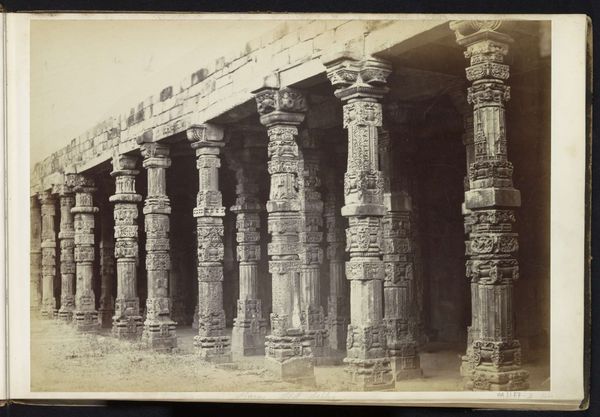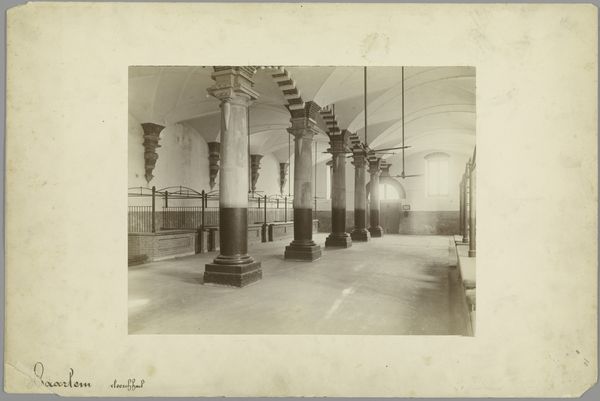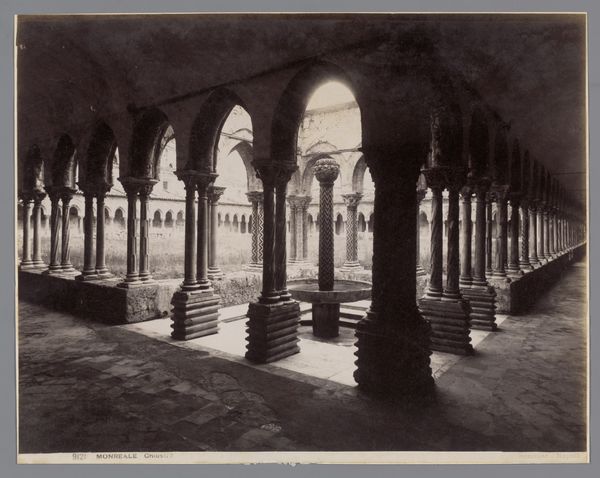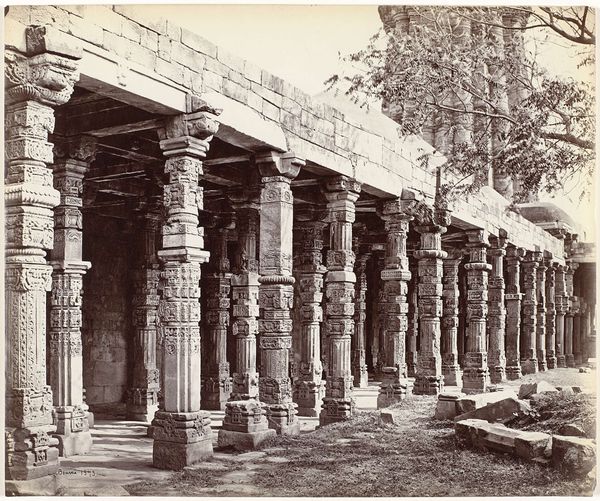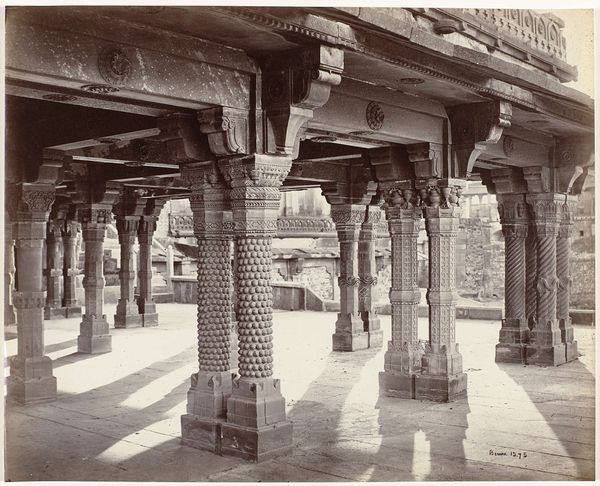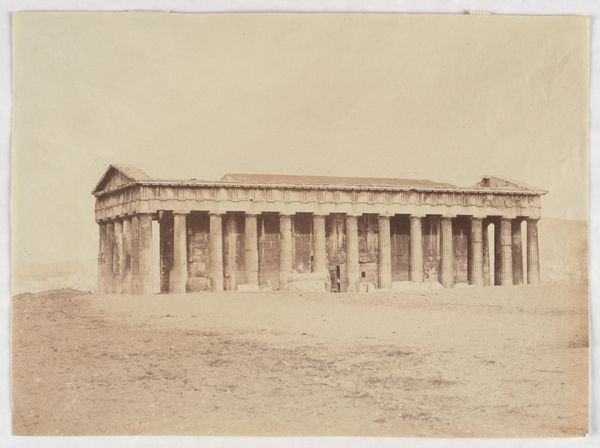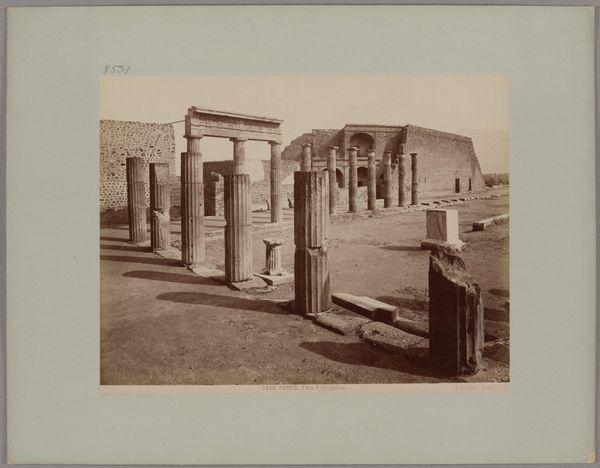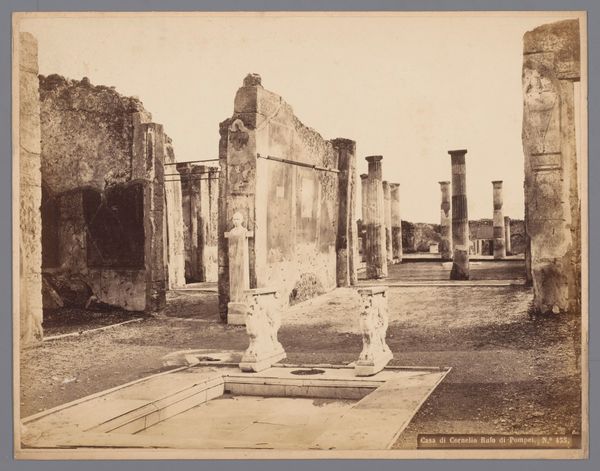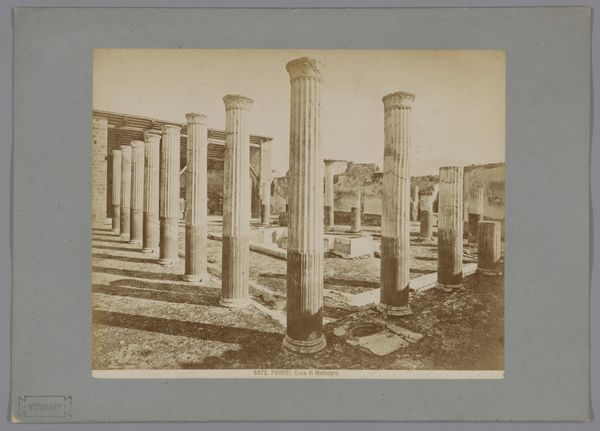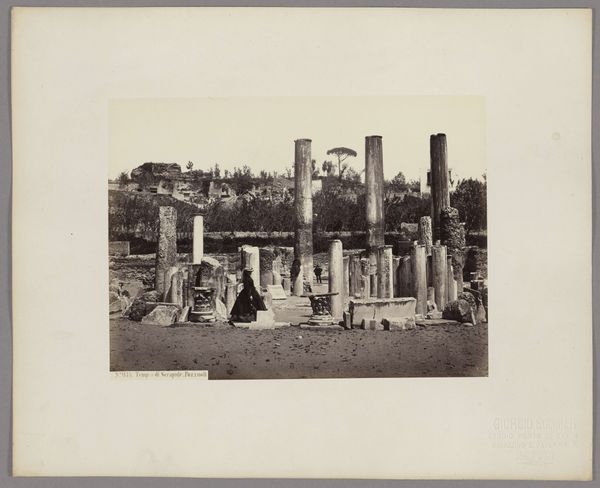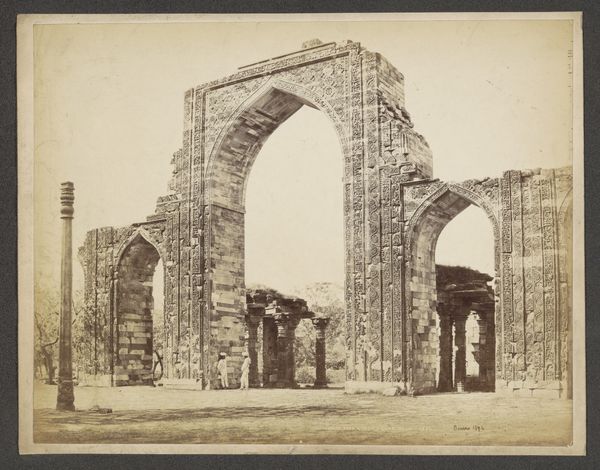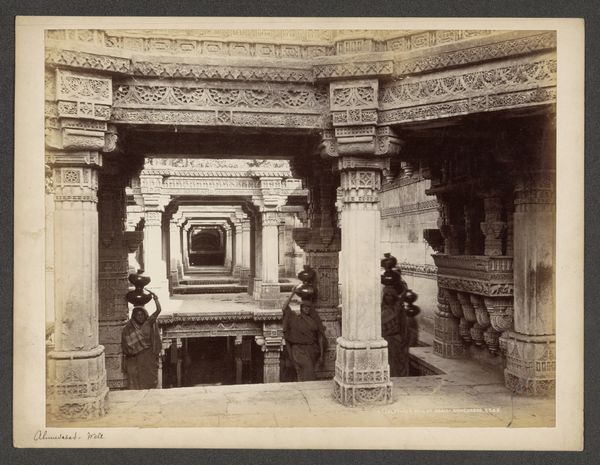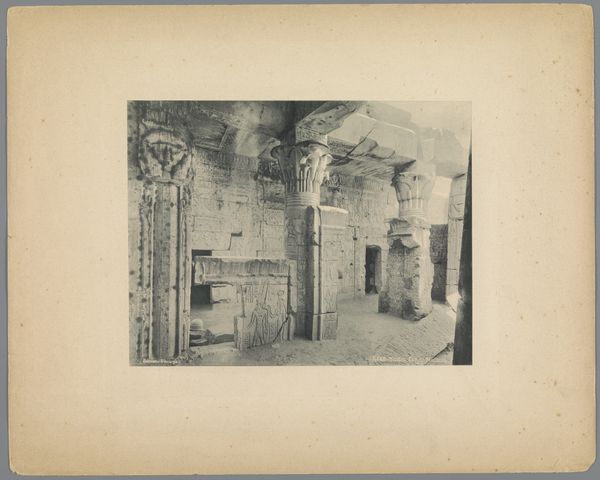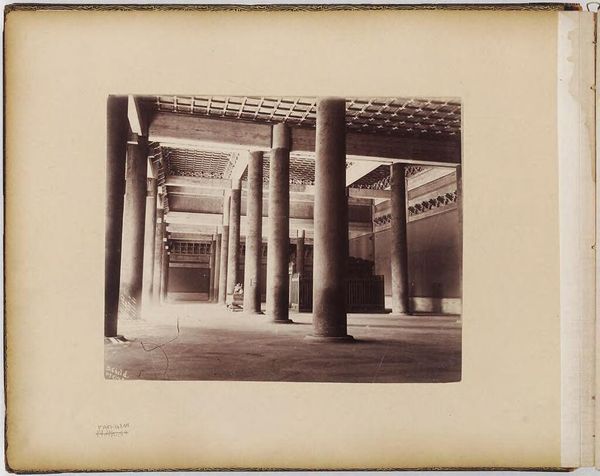
photography, albumen-print, architecture
#
landscape
#
photography
#
column
#
orientalism
#
islamic-art
#
albumen-print
#
architecture
Dimensions: height 222 mm, width 286 mm, height 240 mm, width 313 mm
Copyright: Rijks Museum: Open Domain
Editor: Here we have an albumen print from between 1872 and 1873, depicting the colonnade of the Adhai Din Ka Jhonpra mosque in Ajmer. I find the sheer number of columns really striking – they almost seem to disappear into the distance. How do you interpret this image? Curator: This photograph offers a potent intersection of architectural documentation and orientalist perspective. Consider how Colin Murray, the photographer, presents this mosque. It isn’t just a building, but an image framed within a broader European fascination with the East. Notice how the image is sepia toned? Editor: Yes, the almost monochromatic scale contributes to a sense of distance, both temporal and geographical. Curator: Precisely. And this distance, enabled by the then-novel medium of photography, served to construct a specific narrative about Islamic architecture within a colonial context. What do you think that narrative might be? Editor: Perhaps one that emphasizes its perceived 'exoticism' and difference, potentially reinforcing colonial power structures. By visually capturing and disseminating images like this, the West was effectively staking a claim, visually, over the East. Curator: Exactly! Think about how images like these shaped public opinion and justified colonial interventions. It's crucial to understand the political implications inherent in seemingly objective documentation. Also, are we seeing a ruin in the picture, or are we seeing the beginning of a great building? This is the power of photography: to pose questions without resolving them. Editor: It’s interesting to think about how the act of photographing architecture can be as loaded as painting a portrait of a ruler. Curator: Indeed. It shows how seemingly straightforward images are imbued with power dynamics, and how their reception contributes to the ongoing politics of representation. Editor: I never thought about landscape photography in this way before. This makes me reconsider what is communicated beyond the subject. Curator: And that is exactly the kind of critical thinking art history hopes to provoke.
Comments
No comments
Be the first to comment and join the conversation on the ultimate creative platform.
